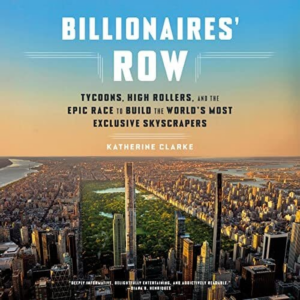LLoyd Jones | Crowdfunding, Senior Housing Optimism & Billionaires’ Race to the Sky

Crowdfunding, Senior Housing Optimism & Billionaires’ Race to the Sky

Curious about crowdfunding? You are not alone. There were 6,455,080 worldwide crowdfunding campaigns last year (fundera.com). Over the past 10+ years, crowdfunding sites have proliferated, providing an excellent source of investment opportunities in a variety of asset classes.
But crowdfunding is not new. Back in 1885, the Statue of Liberty arrived in pieces in New York Harbor, but New York did not have the funds to install the statue, and U.S. Congress was unwilling. But Philadelphia, San Francisco, and Baltimore would have been happy to have it. That’s when Joseph Pulitzer, the publisher of the New York World, asked the newspaper’s readers to contribute – i.e., to crowdfund – the assembly and installation of Lady Liberty. Within five months the publication raised enough to install the statute. Three- quarters of the donations were less than one dollar. So, Lady Liberty ended up in New York Harbor thanks to the many small investors.
And what about Jeff Bezos and Amazon? Another “crowdfunding” effort. In the beginning, Bezos raised $1 million dollars through 22 individual investors, each contributing $50,000. In exchange, he gave away 20% of the company. A company that is now worth over ONE TRILLION DOLLARS. Now that was a good investment!
Today, global crowdfunding is a $10.8 billion industry, growing at approximately 45% between 2022-2030, according to Custom Market Insights (CMI.) Here in the U.S. one of the largest real estate crowdfunding firms has seen as much as $4 billion invested capital in the past ten years and over 300,000 investors.
Real estate investing through crowdfunding has become a very viable opportunity both for the “accredited investor“ and for smaller family offices. Investment units are smaller, giving non-institutional investors access to opportunities that most would not even hear about. The assets are typically institutional-quality, and investors can even participate in funds containing several such assets, thus spreading their risk.
The key to crowdfunding investment is the sponsor/operator. Real estate is a big business, so you should know who is running that business. The sponsor identifies and underwrites the investment, then creates a business plan based on the financial analysis. This analysis determines the projected returns, so the sponsor must be experienced underwriting the specific asset class, but also in operating the investment to achieve the projected outcomes.
Experience is critical, especially during up-and-down markets. Sponsors must evaluate risk – and underwrite for it. That skill comes with experience over many economic cycles. Remember, your investment is probably a five-year commitment, and the economic environment will change – sometimes drastically and abruptly – during those years. Be sure your sponsor has met those challenges previously.
Operational experience is also paramount. Management (of any asset) is not a “seat of your pants” job. It requires proven programs and procedures. We have often said that management is the most important element of an investment. The operator must have the skill to implement the business plan and meet performance expectations, again, even if the economic environment should change.
The track record is a good indicator of the sponsor expertise. Every sponsor will have a few disappointments, but the track record average should align with its projected outcomes. All investments have risks. Responsible sponsors will share that risk with their investors by putting their own capital into the investment.
These sponsor attributes are equally appliable to institutional investors and individuals participating in crowdfunding. With crowdfunding, you will find numerous platforms that offer investments submitted by individual sponsors. In other cases, sponsors will maintain their own exclusive platform with their own acquisitions. In any case, the sponsor’s reputation and experience are paramount. You are entrusting your funds to them; you want to know who will be running your business.

Good News for Senior-Housing Investment
1. “Senior Housing Occupancy Recovery: A Compelling Case for Optimism, Growth, and Renewed Purpose” (NIC)
Senior-housing demand continues to outpace supply for the ninth consecutive quarter, positioning the senior-housing market to reach/exceed pre-pandemic levels in 2024. This is a very positive sign for senior-housing investors as senior facilities continue to recover from the devastation caused by the pandemic. Occupancies are rising, and we know the demand is there as this huge generation ages.
2. ”Older adults become less frail after moving into senior housing.” (NIC)
Socialization, balanced nutrition, medication management provide a quantifiable improvement on a resident’s health per a study by the University of Chicago.
Despite an initial reluctance to entering senior housing, it appears that this kind of lifestyle can help restore a resident’s vitality and independence. This finding may help family members make caregiving decisions.

Now the fun stuff: Books!

Billionaires’ Row
Tycoons, High Rollers, and the Epic Race To Build the World’s Most Exclusive Skyscrapers.
By Katherine Clarke
This is a great read for anyone interested in real estate development.
It’s about people, shenanigans, and inside stories in the world of ultra-high skyscrapers in New York City, the soaring spires just south of Central Park called “Billionaires’ Row.”
The book is aptly named as critics of the high-rise development are quick to point out. Hedge funder Ken Griffin set the record price for a U.S. home when he paid nearly $240 million for an apartment on Billionaires’ Row. Marketing efforts include $1 million marketing videos.
But critics also point out that the ultra-tall buildings can cast 4000-foot shadows (about three-quarters of a mile) over Central Park.
The development of these massive structures is a long, hard effort. The book talks about cranes breaking and banging into upper windows. In one instance, the tallest free-standing crane in the U.S. at 220 feet crashed and rained debris on the street below. Luckily it was during the pandemic, so the streets were relatively quiet.
Not only long and hard, it’s also an innovative effort. Entire floors of these tall, skinny buildings were designed to be vacant and open to let air pass through, keeping the building steady in the wind.
This book is a fascinating history of the “race to the sky,” full of rivalries, partnerships, competition, and politics. We think you will enjoy it.

Thank you for reading our newsletter. We hope to grow it into a very useful, helpful tool for you on your real estate journey. If you have thoughts you’d like to share, ideas you’d like to discuss, please let me know by sending an email to chrisfinlay@lloydjonesllc.com or visiting http://www.lloydjonesllc.com.